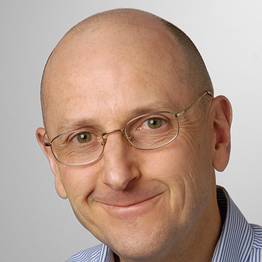
Gian Paolo Dotto, M.D., Ph.D.
|
Investigator, Full Prof (M) Dermatology Research MGH, Mass General Research Institute |
|
Professor of Dermatology, Part-time Harvard Medical School |
Research Interests
Research Narrative
Cancer is a combined result of altered organ and tissue homeostasis, rather than single deregulated groups of cells. Only a minor fraction of pre-malignant lesions progress to malignancy for reasons that are not understood, as many genetic changes found in invasive and metastatic tumors are also found in apparently normal tissues.
The main research focus of the laboratory is on determinants of pre-malignant to malignant tumor conversion and on field cancerization, a condition of major clinical significance consisting of multifocal and recurrent tumors associated with widespread changes (cancer fields) of surrounding normal tissues.
We have also started to explore genetic and epigenetic determinants of cancer susceptibility as they relate to gender- and race-related differences. We use skin and Notch signaling as main entry points to understand the complexity of cancer-determining signals.
On the basis of the bad seed / bad soil hypothesis that we have proposed (Dotto, J Clin Invest. 2014, doi: 10.1172/JCI72589), two main topics are being addressed: (i) intrinsic control mechanisms underlying the opposing balance between epithelial cell differentiation and cancer; (ii) role of underlying mesenchymal cells in control of epithelial tumorigenesis.
Field Cancerization : bad seed / bad soil hypothesis.
Environmental insults, like UV irradiation or smoke, can target both epithelial and stromal compartments of organs such as skin, head/neck, lung, bladder or breast, with ensuing genetic and/or epigenetic changes.
Establishment and spreading of “cancer fields” is the likely result of an interplay between epithelial and stromal alterations, with the latter playing an equally important and possibly primary role. The situation leading to multifocal and recurrent neoplastic lesions may be analogous to that of a bad plant difficult to eradicate.
This may be due to roots deeply embedded in the terrain or the spreading of bad multiple seeds, growing in the presence of a permissive or favorable soil. An alternative possibility with important conceptual implications is that the main problem is the soil itself. A bad soil could corrupt properties of otherwise perfectly good plants or seeds. According to this view, unless the soil is corrected, various forms of prevention and intervention would be of little or no use.
| gdotto@mgh.harvard.edu |
| 6177249538 |
|
CNY-Building #149 149 13th Street Charlestown, MA 02129 |
